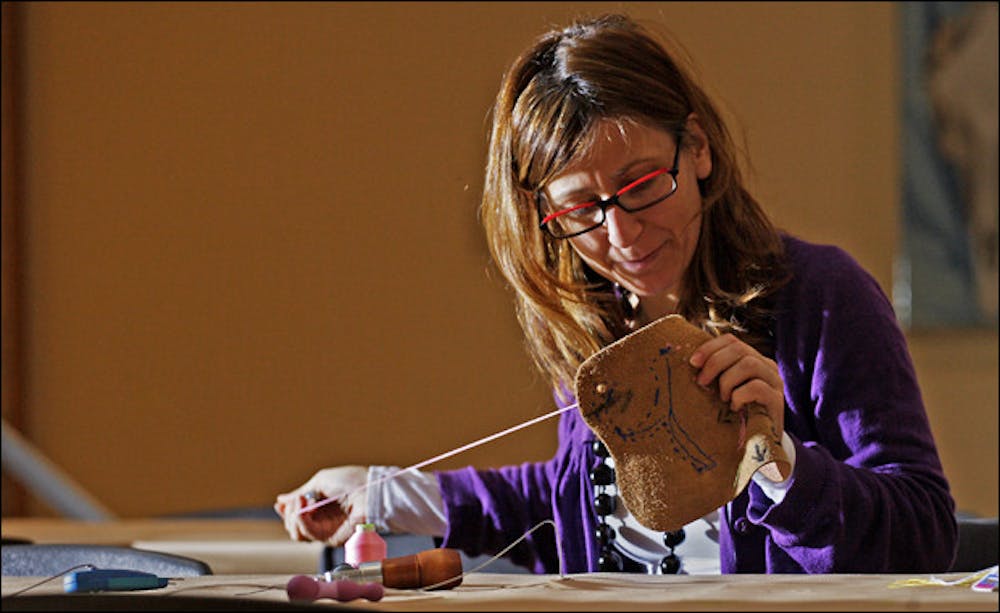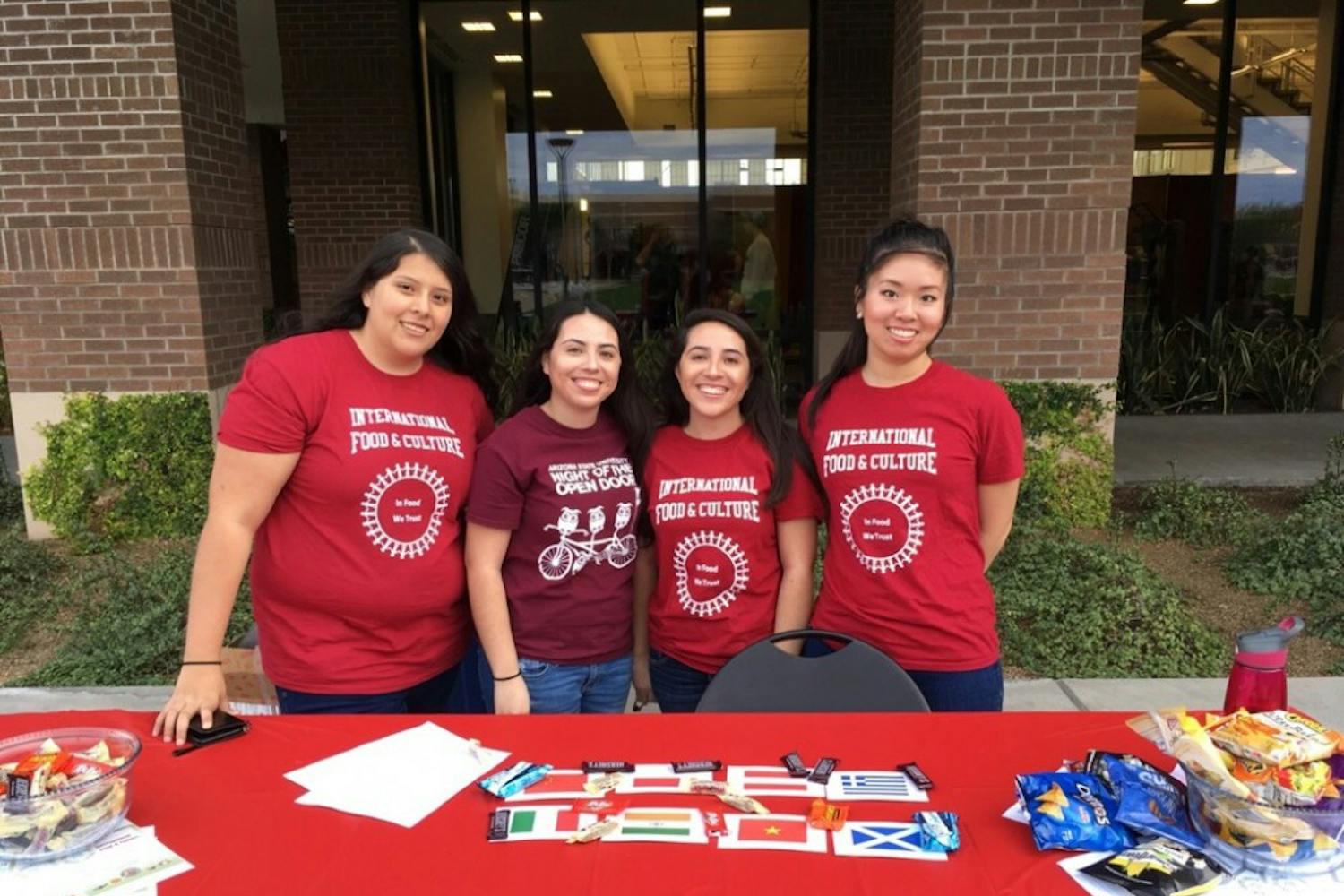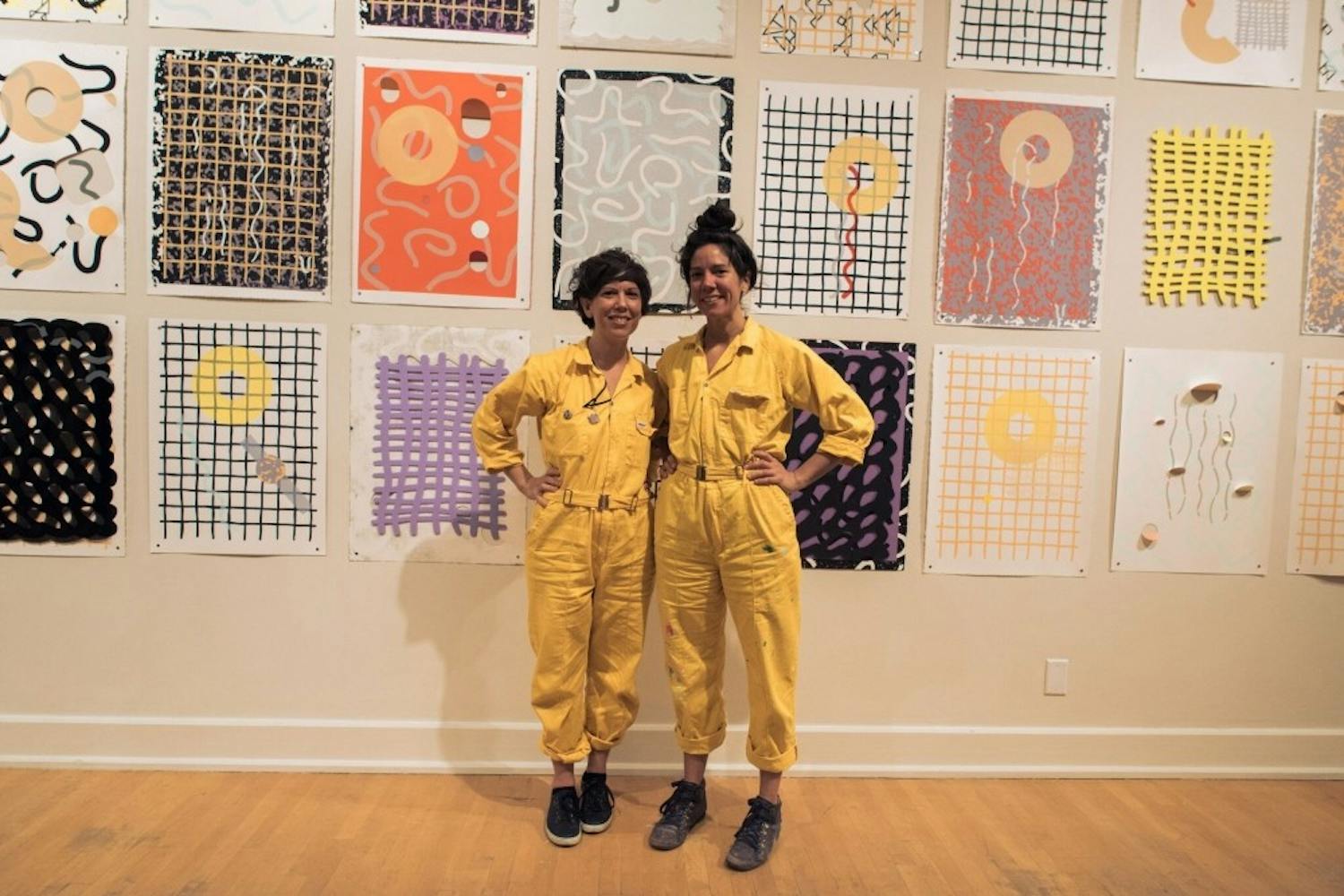Most people walk into art museums as observers, but at ASU, they can leave as artists.
The ASU Art Museum is currently sponsoring a community art project with artist Anila Rubiku.
Rubiku is here from Milan, Italy as a part of the CEC ArtsLink, an arts service organization that supports the exchange of artists and cultural managers between the United States and Eastern Europe. She is the third artist to take part in the museum’s social studies initiative, which began in Fall 2007.
Her project will consist of 180 individually sewn pieces of leather that will come together to make a huge piece of work. Each piece depicts Rubiku’s impressions of Arizona as they relate to the theme of urban and cultural development.
“This project that is done of small pieces together is like telling a story, like brick-by-brick can build a wall,” Rubiku said. “It will be a very strong work done with very many hands working together.”
Rubiku said she enjoys working with local community members because their influence enhances the project. This project especially is meant to be a collaboration because of how labor-intensive and time-consuming it is to sew on leather.
“This is the main thing I wanted to do here,” Rubiku said. “You have a group working together, chatting together and getting to know each other and the work is developing and growing.”
Anyone is welcome to come and join the artist as she sews.
George Macias, a 3-D design undergraduate student, volunteers at the gallery nearly every day.
“It’s interesting to see someone else’s perspectives [of Arizona] because I’ve been here for awhile,” Macias said. “She does throw some sexual backgrounds into the objects.”
The sexual undertones in Rubiku’s artwork are a reminder that all growth and development centers around people, and people all begin from a single act of love, she said.
“It is the connection that if people don’t live here, there isn’t a need to develop here,” Rubiku said. “Love to change things is the first thing you need. Through love, everything can change.”
Rubiku and her assistants began working on the project in October and will continue working until she leaves on Nov. 18. She will finish the project in Milan with the help of local people there. In February her project will be showcased at a museum in Florence, Italy.
ASU Art Museum Curator John Spiak helped initiate the Social Studies Initiative, which provides opportunities for artists to work creatively and collaboratively with students, other artists, faculty and community members.
"We really feel that as a university and as a society, the human factor is so important and often forgotten,” Spiak said. “We really want to bring that back. We want to make the museum not just a place for preservation and observation, but we truly want to make it a place for interaction.”
Social Studies opens with an empty gallery and an artist who will construct an exhibit based on the artist’s interactions with the audience. As visitors, students and staff observe the artist work, they are asked to join in the creative process.
Rubiku has another art project, a video installation titled “One Night Only,” that will premiere her for the first time in the U.S. at Frank Lloyd Wright’s Taliesin West on Friday from 7 to 9 p.m.
Like Rubiku’s museum work, "One Night Only" is another medium for the artist to explore the theme of urban and human development, she said. The video installation includes a paper construction of the most rapidly growing cities of the last 10 years with video projection.
Reach the reporter at lauren.gambino@asu.edu.




